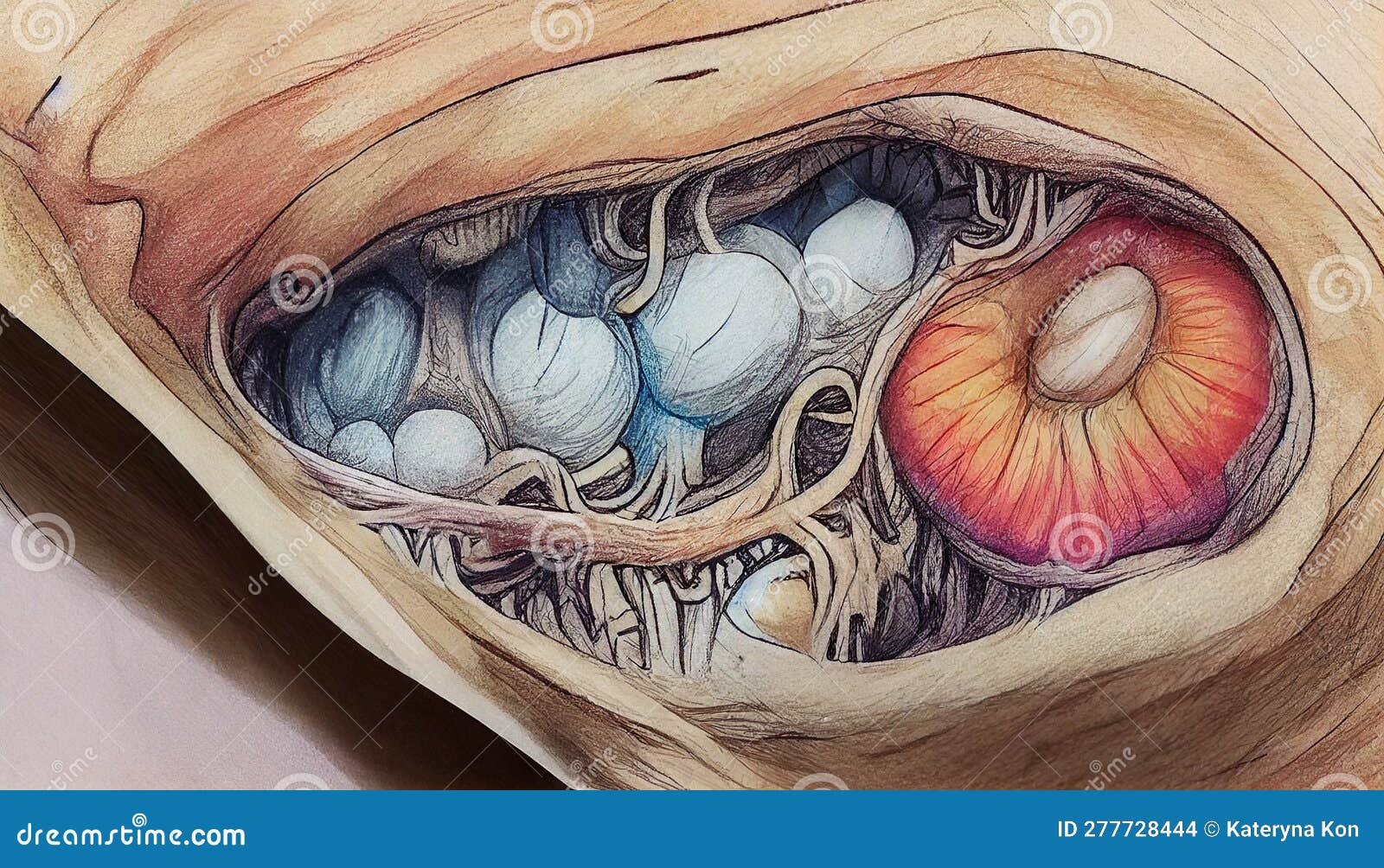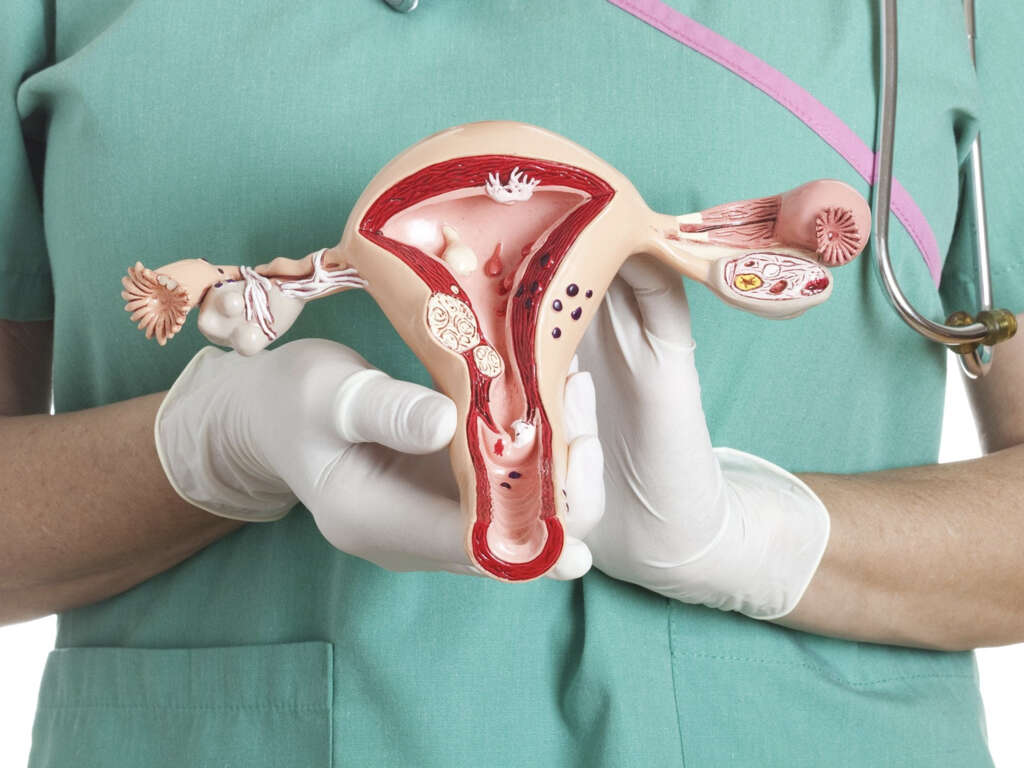Table Of Content
Ovarian cysts are fluid-filled pockets that grow on the ovaries. Almost all ovarian cysts are non-cancerous (benign), but some are cancerous (malignant), or may become cancerous over time. Many people with ovarian cysts don't have any symptoms or require any treatment, as many go away on their own. However, some ovarian cysts may need removal with an operation. A cyst on your ovary can be found during a pelvic exam or on an imaging test, such as a pelvic ultrasound.

Management and Treatment
An ultrasound scan is a safe and painless test which uses sound waves to create images of organs and structures inside the body. The probe of the scanner may be placed on the abdomen to scan the ovaries. A small probe is also often placed inside the vagina to scan the ovaries, to obtain more detailed images. After an egg is released, the follicle develops into a structure called the corpus luteum.
What does ovarian cyst pain feel like?
The association of dermoid cysts with pregnancy has been increasingly reported. They usually present the dilemma of weighing the risks of surgery and anesthesia versus the risks of untreated adnexal mass. Most references state that it is more feasible to treat bilateral dermoid cysts of the ovaries discovered during pregnancy if they grow beyond 6 cm in diameter.

News from Mayo Clinic
Small, asymptomatic ovarian dermoid cysts may be discovered incidentally during routine ultrasound exams, such as those given during pregnancy. They may also be discovered during delivery via cesarean section (C-section). The underlying cause of ovarian dermoid cysts is not completely known or understood.
Dermoid cysts are caused by a problem with the cell differentiation process. That’s why ovarian dermoid cysts contain tissues that don’t belong in an ovary, such as hair, teeth, fat, or bone. Most providers remove ovarian dermoid cysts using laparoscopy, or “keyhole surgery.” This type of surgery involves small, strategic cuts into your abdomen.
Medical Treatment for Dermoid Cysts
Each month during your menstrual cycle, a follicle (cyst) grows on your ovary. Typically, ovarian cysts are functional (not disease-related) and usually disappear on their own within 60 days. Oral contraceptives may be prescribed to help establish normal cycles. An ovarian cyst is a sac filled with fluid that forms on or inside an ovary.
When she was 12, Lily Bratchell lost her right ovary to a large complex cyst after initially being misdiagnosed with appendicitis. Your provider can advise you on the best surgical options available, depending on your unique case.
If you already know you have a teratoma, or had surgery to remove one, you should call your provider if you develop pain or other new symptoms. In some instances, ovarian teratomas may occur alongside NMDA encephalitis — a rare condition that can lead to severe headaches, confusion and psychosis. You may need other treatments if you have polycystic ovary syndrome or another disorder that can cause cysts. Dermoid cyst symptoms are minor and the cysts are usually painless.
In general, if an ovarian mass is over 5 centimeters across, it is considered dangerous and should be surgically removed. If you think you might have an ovarian cyst, make an appointment at your nearest Planned Parenthood health center. Ovarian cysts are super common and usually nothing to worry about. But occasionally they grow bigger and don’t go away, which can cause problems.
Ovarian dermoid cysts are the most common type of ovarian teratoma, which is a type of mass, or tumor, that develops on the ovaries. If you have frequent ovarian cysts, your provider may prescribe birth control pills (oral contraceptives). These pills may reduce the risk of developing new cysts.
Ovarian Cysts: The Good, the Bad, and the Ugly - University of Utah Health Care
Ovarian Cysts: The Good, the Bad, and the Ugly.
Posted: Thu, 09 Jul 2020 07:00:00 GMT [source]
Tissues such as skin, hair, teeth, and nails, develop from this layer of cells. Before planning your treatment, your healthcare provider will take your unique situation into account. Treatment will depend on several factors, including your age, medical history, overall health and personal preferences.
An ovarian dermoid cyst is a collection of mature tissue and sticky fluid that forms when cells grow atypically. Treating ovarian dermoid cysts requires removing the cyst and, in rare cases, the affected ovary. The options available depend on how concerning the cyst is and your plans to have children. Less often, magnetic resonance imaging (MRI) is used to identify ovarian dermoid cysts. An MRI can offer additional insight into the make-up of a cyst if an ultrasound doesn’t provide enough information.
A dermoid cyst in the ovary is a sac-like growth that contains hair, fat, and other tissue. A dermoid cyst might include clumps of long hair, blood, bone, teeth, nails, eyes, cartilage and thyroid tissue. They are present at birth as they develop as an embryo grows. If you are not trying to get pregnant and you often get functional cysts, you can prevent them by taking birth control pills.
Most dermoid cysts remain asymptomatic and won't impact fertility in themselves. Anyone with ovaries can develop an ovarian dermoid cyst. They’re likely present at birth, but they’re usually not discovered until a routine imaging procedure.
A teratoma is a type of germ cell tumor — a tumor that starts in your reproductive cells like eggs and sperm. Most teratomas are benign (noncancerous), but sometimes they can become malignant (cancerous). Cystadenomas and dermoid cysts typically don't affect fertility directly. However, they might cause fertility problems if complications develop (such as ovarian torsion).

No comments:
Post a Comment